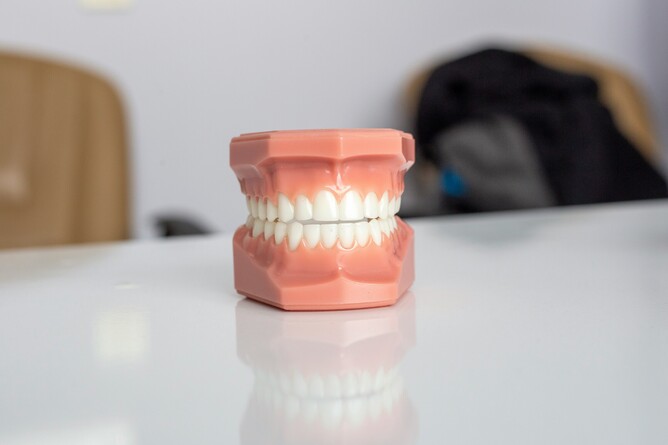That furry feeling on the teeth when you wake in the morning is what we call dental plaque. This technically is known as biofilm - a collection of microorganisms, which form on the surface of the teeth and below the gumline. The make-up of this biofilm, and the activity of the specific microorganisms within it can influence the health of the teeth and the gums, and increase the likelihood of developing cavities, gingivitis and periodontal disease.
You know the usual routines important for avoiding cavities in the teeth – daily brushing, flossing, a diet low in sugar.
Why reduce the sweet sticky stuff? …and by the way it’s also refined carbohydrates that act like the sticky stuff.
Sugar is metabolised by overgrowth of certain bacteria found in the biofilms to create acidic by-products, which get trapped in plaque, and subsequently cause demineralisation of the enamel on the teeth. A diet high in simple sugars over time will disproportionately increase the acidifying bacteria and risk of dental cavities.
One of these bad guys is known as Streptococcus mutans, which can wreak havoc long-term causing inflammation in the gums. Bleeding when brushing teeth is a sure sign of this. Left unchecked gum inflammation or gingivitis can lead to periodontal disease, which affects the deeper pockets of the gum and bone.
Inflammation only further supports the proliferation of periodontitis-associated microorganisms which have adapted to thrive in inflammatory environments such as Porphyromonas gingivalis, Treponema denticola, and Tannerella forsythia (also known as the ‘red complex triad’). Wow what a gang!
But it’s not all bad! Where there are villains there are always the good guy bacterial superheroes, which have alkalising activity withing the mouth. These good guys won’t thrive in an acidic environment, hence the need for a dietary change.
There is, however, a lot more we can do to create a healthy microbiome in the mouth. The significance of getting this right is for more than having sparkly whites and sweet-smelling breath.
Did you know that there are direct links to unhealthy gums and the health of the heart and blood vessels, infertility, metabolic health, autoimmune conditions and Alzheimer’s disease?
The benefits of probiotic strains L. helveticus Rosell, L. rhamnosus , B. longum Rosell and Saccharomyces boulardii are supported by ten1-10 published clinical trials on oral health, including dental plaque and gum health. In one of these studies, the effect of Biome Dental was compared to placebo and chlorhexidine mouthwash in 60 healthy children. After 14 days of intake, the average dental plaque score and gingival index (a measure of poor gum health) were 71% and 73% lower in the Biome Dental group compared to placebo (p<0.05)8.
References
1.Jindal,G.,Pandey,R.K.,Agarwal,J.,& Singh, M. (2011). A comparative evaluation of probiotics on salivary mutans streptococci counts in Indian children. European Archives of Paediatric Dentistry,12(4),211-215.
2.Jothika,M., Vanajassun, Pp.,& Someshwar, B.(2015). Effectiveness of probiotic, chlorhexidine and fluoride mouth wash against Streptococcus mutans- Randomized, single-blind, in vivo study. Journal of International Society of Preventive and Community Dentistry, 5(7),44.
3.Doppalapudi,R.,Vundavalli,S.,& Prabhat, M.P.V.(2020). Effect of probiotic bacteria on oral Candida in head‑and neck‑radiotherapy patients: A randomized clinical trial. Journal of Cancer Research and Therapeutics,16,470–477.
4.Thakkar,P.K.,Imranulla,M.,Kumar,P.G.N.,Prashant,G.M.,Sakeenabi,B.,&Sushanth,V.H.(2013). Effect of probiotic mouth rinse on dental plaque accumulation: A randomized controlled trial. Dentistry and Medical Research|,1(1),7–12.
5.Deshmukh, M.A., Dodamani, A.S., Karibasappa, G., Khairnar, M.R., Naik, R.G., & Jadhav, H.C.(2017). Comparative evaluation of the efficacy of probiotic, herbal and chlorhexidine mouthwash on gingival health: A randomized clinical trial. Journal of Clinical and Diagnostic Research,11(3), ZC13–ZC16.
6.Purunaik,S.,Thippeswamy, H.M., & Chavan, S.S.(2014). To Evaluate the Effect of Probiotic Mouth rinse on Plaque and Gingivitis among 15–16-Year-Old School Children of My sore City, India-Randomised Controlled Trial. Global Journal of Medical Research,14(4),9–14.
7.Jindal,V., Mahajan, N., Goel, A., Kaur,R., Mahajan, A., & Malhotra,P. (2017). Clinical efficacy of probiotic mouthwash in the treatment of gingivitis patients in Himachal population. Journal of the International Clinical Dental Research Organization, 9(1),41.
8.Sharma, P., Datta, G., Gandhi,K.,& Kumar,D. (2019). A comparative evaluation of efficacy of probiotic and chlorhexidine mouth rinses on gingival health and plaque accumulation in 6-9 year old children. International Journal of Applied Dental Sciences, 5(1),156–162.
9.Ranjith,etal. 2022. Probiotic mouthwash as an adjunct to mechanical therapy in the treatment of stage II periodontitis: A randomized controlled clinical trial. International Journal of Dental Hygiene,20(2), pp. 415-421.
10.Manikandan, S., Behera,S., Karthikeyan, R., Niranjana, A., Bharathan, R., & Mohammed,O.B. (2020).Effect of green tea extract mouth rinse and probiotic mouth rinse on salivary pH in a group of school children: An in vivo study. Journal of Pharmacy And Bio allied Sciences,12(5),404.
